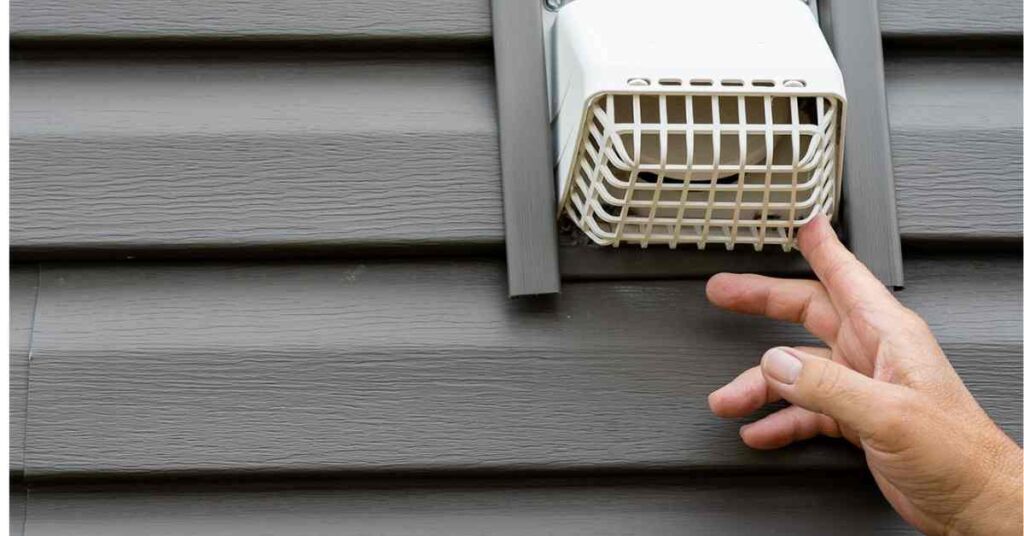Introduction
Dryer vents are crucial components of modern laundry systems, responsible for expelling moist air from dryers to the outside. Without proper ventilation, dryers can overheat, become less efficient, and even pose fire hazards. One often overlooked but critical accessory for dryer vents is the vent cover. Covers for dryer vents serve multiple purposes: they prevent debris and pests from entering the vent, enhance energy efficiency, and extend the lifespan of the dryer. This article delves into the importance of dryer vent covers, different types available, installation tips, and maintenance practices to ensure optimal performance.
The Importance of Dryer Vent Covers
Preventing Blockages
One of the primary functions of a dryer vent cover is to prevent blockages. Lint, dirt, and other debris can accumulate in the vent over time, reducing airflow and making the dryer work harder. This not only increases energy consumption but also poses a fire risk. A well-designed vent cover helps keep the vent clear by blocking debris from entering the ductwork.
Keeping Out Pests
Dryer vents can be attractive entry points for pests like birds, rodents, and insects seeking warmth or shelter. These intruders can cause significant damage and create blockages. Vent covers with fine mesh or specially designed flaps can effectively keep pests out without restricting airflow.
Enhancing Energy Efficiency
A properly sealed dryer vent cover can improve the overall energy efficiency of your dryer. When vents are left exposed, cold air can enter the home in the winter, and hot air can enter in the summer, causing your HVAC system to work harder to maintain a comfortable temperature. Vent covers help maintain the internal environment by providing a seal that prevents air exchange.
Safety
A blocked or poorly functioning dryer vent can lead to overheating, increasing the risk of a dryer fire. According to the National Fire Protection Association (NFPA), dryer fires are responsible for thousands of fires annually. Using a vent cover to keep the vent clear of obstructions can significantly reduce this risk.
Types of Dryer Vent Covers
Louvered Vent Covers
Louvered vent covers are one of the most common types. They consist of several horizontal slats that open when the dryer is in use and close when it is off. This design prevents debris and pests from entering while allowing moist air to escape. These covers are usually made of durable plastic or metal and are easy to install.
Magnetic Vent Covers
Magnetic vent covers are designed to fit over the vent opening and are held in place by strong magnets. These covers are particularly useful in preventing drafts when the dryer is not in use. They are easy to install and remove, making them a convenient option for seasonal use.
Mesh Vent Covers
Mesh vent covers are designed with a fine metal or plastic mesh that prevents small pests and debris from entering the vent. These covers are ideal for homes in areas prone to small insects or where lint buildup is a concern. Mesh covers need to be cleaned regularly to maintain airflow.
Hooded Vent Covers
Hooded vent covers feature a curved design that directs air downward as it exits the vent. This design helps to prevent rain and snow from entering the vent, making them ideal for regions with harsh weather conditions. Hooded covers are usually made of durable materials like metal or high-grade plastic.
Exterior Wall Vent Covers
These vent covers are installed on the exterior wall of the house where the dryer vent exits. They come in various designs, including louvered, hooded, and mesh styles, providing options to match the home’s exterior while ensuring efficient ventilation.
Choosing the Right Dryer Vent Cover
Material
When selecting a dryer vent cover, the material is a crucial consideration. Metal covers, such as those made from aluminum or stainless steel, are durable and resistant to weather elements. Plastic covers are lightweight and affordable but may not be as durable as metal options. Consider the climate and environmental factors when choosing the material for your vent cover.
Size
Ensuring that the vent cover fits correctly is essential for effective performance. Measure the diameter of your dryer vent before purchasing a cover. Most covers are designed to fit standard vent sizes, but it’s always best to check the specifications to ensure compatibility.
Ease of Installation
Choose a vent cover that is easy to install, especially if you plan to do it yourself. Some covers come with pre-drilled holes and mounting hardware, while others may require additional tools and materials. Look for covers with clear instructions and consider your DIY skills when making a selection.
Maintenance
Maintenance is an important aspect of vent cover selection. Some covers require more frequent cleaning than others, depending on their design and the environment. Louvered and mesh covers, for example, may need regular cleaning to remove lint and debris. Consider the maintenance requirements and choose a cover that fits your lifestyle.
Aesthetic Appeal
While functionality is paramount, the aesthetic appeal of the vent cover should not be overlooked. Choose a cover that complements the exterior of your home. Many vent covers come in various colors and finishes, allowing you to match them to your home’s siding or trim.

Installation Tips
Gather the Necessary Tools
Before beginning the installation, gather all necessary tools and materials. These may include a drill, screws, a screwdriver, a level, caulk, and a utility knife. Having everything ready will make the installation process smoother and quicker.
Measure and Mark
Measure the vent opening and mark the placement for the cover. Use a level to ensure that the cover will be installed straight. Proper placement is crucial for ensuring that the cover functions correctly and looks neat.
Remove the Old Cover
If you are replacing an existing vent cover, carefully remove it before installing the new one. Be cautious not to damage the vent duct during removal. Clean the area around the vent opening to ensure a secure fit for the new cover.
Install the New Cover
Follow the manufacturer’s instructions for installing the new vent cover. This usually involves attaching the cover to the exterior wall with screws. Ensure that the cover is securely fastened and sealed to prevent air leaks.
Seal the Edges
After installing the cover, use caulk to seal the edges around the cover. This will prevent drafts and water infiltration. Allow the caulk to dry completely before using the dryer.
Maintenance Practices
Regular Cleaning
Regular cleaning of the dryer vent cover is essential to maintain optimal performance. Lint and debris can accumulate on the cover, reducing airflow and efficiency. Clean the cover at least once a month, or more frequently if you notice a decrease in dryer performance.
Inspect for Damage
Periodically inspect the vent cover for signs of damage or wear. Cracks, holes, or broken slats can compromise the cover’s effectiveness. Replace damaged covers promptly to ensure continued protection and efficiency.
Check for Pest Intrusion
Even with a vent cover in place, it’s a good idea to check for signs of pest intrusion. Look for nesting materials or droppings around the vent. If you suspect pests have entered the vent, take steps to remove them and reinforce the cover to prevent future intrusions.
Ensure Proper Ventilation
Make sure that the vent cover does not obstruct airflow. Some covers, especially those with fine mesh, can become clogged with lint. Regularly check and clean the cover to ensure that air can flow freely through the vent.
Conclusion
Covers for dryer vents are essential accessories that provide numerous benefits, including preventing blockages, keeping out pests, enhancing energy efficiency, and improving safety. With various types of vent covers available, homeowners can choose the best option to suit their needs and preferences. Proper installation and regular maintenance are crucial for ensuring that dryer vent covers perform optimally and extend the lifespan of the dryer. By investing in a high-quality dryer vent cover and maintaining it properly, you can protect your home, improve dryer performance, and enhance energy efficiency.




